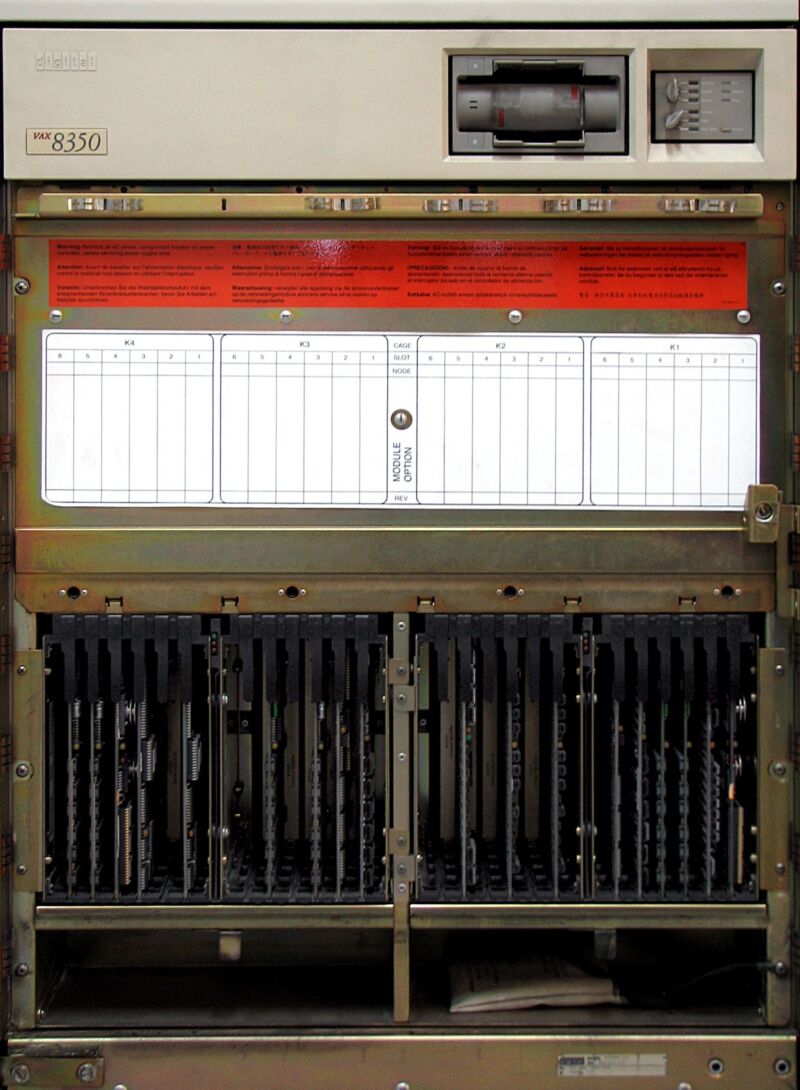Long gone, DEC is still powering the world of computing

Enlarge / A DEC VAX 8350 with cover removed. (credit: Adamantios)
Even though very few of the early players in technology still exist, we use their creations to this day. Bell Labs created the transistor, and Fairchild Semiconductor created the integrated circuit, but neither company is still around. So is the case with Digital Equipment Corporation (DEC). It no longer exists, but unless you're using a handheld device to read this article, you're using a descendant of DEC technology.
DEC was founded in 1957 by Ken Olsen, Harlan Anderson, and H. Edward Roberts to build small digital modules, but the team soon discovered that they could use those modules to build minicomputers-computers that were smaller and less powerful (but cheaper) than mainframes, which were the business standard at the time.
In 1977, DEC introduced the VAX, a new line of minicomputers that featured a 32-bit instruction set architecture and virtual memory. Its operating system, VMS, was a multi-user, multitasking OS that provided features we now take for granted, including virtual memory, file sharing, and networking. It amassed a wide variety of third-party software packages that made it the most popular system in its class.